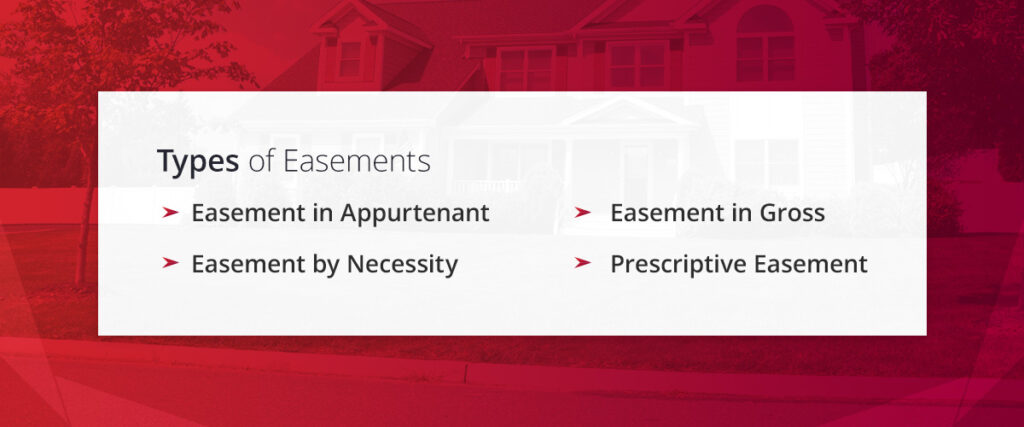
Real estate is a popular investment option for investors. Some real estate includes easements that give another party the right to use a part of the property. While some property owners may see easements as a deal-breaker, they can be a great investment opportunity if you have a self-directed IRA. This article explains everything you need to know about investing in an easement, from what the most common type of easement is to the benefits of investing in this asset type.
What Is an Easement in Real Estate?
An easement is a real estate right where an entity can use someone else’s property in exchange for a fee paid to the property owner. Public utility companies often purchase easements to erect telephone lines or run pipes underneath a property. A neighboring property may also use an easement to access their property from the main road.
The dominant tenement is the one who benefits from the easement and has the usage rights. The servient tenement has the burden of the easement and allows the dominant tenement usage rights to their property.
An easement agreement typically involves one party paying the property owner a fee to use an easement for a specific reason. In the agreement, the specific use of the easement is explicitly outlined, and the termination of the easement is given to the property owner. In some cases, the easement will transfer into the property sale. Before you purchase a property, it’s important to investigate whether there is an easement that will transfer when you purchase the property.
At first glance, an easement may seem problematic to a property owner, but they are often very practical. For example, they can help a utility company access your property. They can also benefit the neighborhood by creating a path for kids to get to school. It’s important to do your research to learn what the terms of the easement are.
What Are the Types of Easements?
There are four different types of easements — the type granted will depend on the use. Let’s look at these four categories and what they mean legally.
Easement in Appurtenant
The term appurtenant means that, legally, something accompanies something else. When a property has an easement in appurtenant, it means that it is permanent and survives changes in ownership. This type of easement involves two properties next to each other. The dominant estate or dominant tenement is the one that has access to the easement. The property where the easement exists is the servient estate or servient tenement. Both the servient and dominant tenement should record the easement on their deeds.
Easement by Necessity
This type of easement is a subcategory to an easement in appurtenant. While some easements may be a luxury, there are cases when it’s necessary. For example, granting a neighbor access to a lake through an easement on your property is a luxury. In contrast, if a lot behind yours needs to use a driveway on your property to access the main road, this is considered an easement in necessity.

Easement in Gross
This is the most common type of easement. Utility companies use this easement for water, gas, sewers, cable or power lines and stormwater drainage channels. In this easement, your property is the servient estate, and the utility company is the dominant estate or tenement. An easement in gross is when a property owner allows an entity to access their land.
A gross easement doesn’t necessarily have to stay with a property when ownership transfers. However, it is unlikely that a utility company will relinquish its rights, which is why they are an exception. When the property changes ownership, the company will likely retain access to the easement.
Historic preservation and conservation easements also fall under this category. A historic easement prevents the current and future property owners from modifying it in a way that would detract from its historical significance. A conservation easement protects the land from any development. A property owner may choose this easement if a home has historical significance or to protect the wildlife on their property.
These types of easements also have financial incentives. The owners may gain a federal income tax deduction, and heirs may pay less estate tax. It may also result in lower local property taxes.
Prescriptive Easement
If an entity openly and continuously uses another person’s property for several years without explicit permission, then it can apply for a prescriptive easement. The number of years that apply varies by state. Property owners should only let an entity or neighbor use part of their property with a legal agreement. Doing so without a formal agreement can result in a prescriptive easement that can affect future sales.
How Do You Invest in an Easement?
Some may choose to invest in conservation easements — however, it’s not for everyone as it usually requires a large investment. You don’t have to be the property owner to invest in a conservation easement. You can invest individually or as part of a syndicate. A syndicate is when a group of people pools together money and partners with the landowner to invest in the easement.
This agreement gives a government agency or local land trust the right to manage the land as part of conservation efforts. Even if investors own the land, it will typically be managed by 501(c)(3) nonprofit organizations or government bodies.
Why Invest in an Easement?
Several benefits come with investing in a conservation easement. Consider the following:
Tax Benefits
People who invest in conservation easements often enjoy significant tax reductions that, in some cases, are more than the amount they invest in the easement. The deduction amount is based on the property’s value for its highest and best use, taking the conservation easement into account. This requires a professional appraisal.
Own Affordable Property
Despite the restrictions on a conservation easement, it can also result in significant savings. It’s often a good investment and a smart way to invest in real estate at an affordable price if you are willing to deal with the restrictions.
Invest Your Self-Directed IRA With Accuplan

With a self-directed IRA, you can take control of your retirement savings and invest in alternative assets. Easements offer a unique investment opportunity for you to invest in property at an affordable price. As an investor in an easement, you can enjoy tax benefits and invest in real estate without taking on the risk of owning it.
At Accuplan, we’ve created a seamless process for opening up a self-directed IRA. Once you’ve funded your account, you can start investing in unique assets such as easements. To open up your self-directed IRA and start investing, contact us today!